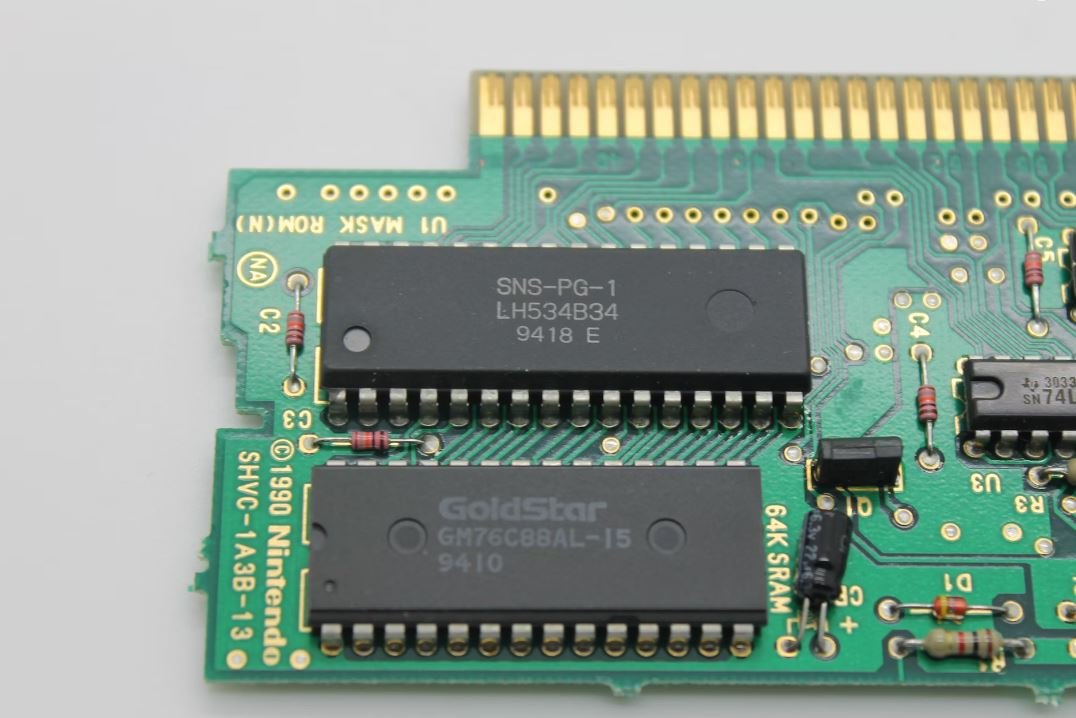AI Is Taking Over the World
Artificial Intelligence (AI) is rapidly advancing and becoming more integrated into our daily lives. This powerful technology is transforming various industries and impacting society in profound ways. From voice-controlled virtual assistants to autonomous vehicles, AI’s presence is undeniable.
Key Takeaways
- AI is rapidly advancing and transforming industries.
- Voice-controlled virtual assistants and autonomous vehicles are some examples of AI applications.
- AI has both positive and negative impacts on society.
- Regulations and ethical considerations surrounding AI are necessary.
AI’s exponential growth and adoption have revolutionized how businesses operate, from automating repetitive tasks to analyzing massive amounts of data for insights. Its ability to learn and improve over time enables AI systems to perform complex tasks that were once exclusive to humans. With AI’s adaptability, industries worldwide are experiencing optimization and increased efficiency.
Although AI brings numerous benefits, it also raises concerns about privacy, data security, and job displacement. As AI systems become more advanced, they gather large amounts of personal data to deliver personalized experiences. However, this raises ethical questions regarding data privacy and the potential misuse of user information by corporations.
Moreover, some fear that AI will replace human jobs, leading to unemployment and inequality. While AI automates certain tasks, it also creates opportunities for humans to focus on more complex and creative work. Collaboration between humans and AI will be crucial in adapting to the changing job landscape and harnessing the full potential of this technology.
AI’s Impact on Society
The integration of AI into society has both positive and negative effects. Let’s explore a few key areas:
1. Healthcare
AI enables faster diagnosis and treatment by analyzing medical images and identifying patterns that may not be recognizable to the human eye. Additionally, AI-powered chatbots provide 24/7 support for general medical queries, improving accessibility to healthcare.
2. Manufacturing
AI-powered robots increase production efficiency, reduce errors, and improve product quality in manufacturing processes. Machine learning algorithms can detect defects in real-time, minimizing waste and enhancing overall productivity.
3. Transportation
Autonomous vehicles guided by AI algorithms can significantly reduce accidents, improve traffic flow, and enhance fuel efficiency. The advanced sensors and decision-making capabilities of AI systems make transportation safer and more sustainable.
Interesting Data Points
| Data Point | Statistics |
|---|---|
| AI market value by 2028 | $190 billion |
| Percentage of CEOs using AI technology | 62% |
| Industry | AI Application |
|---|---|
| Finance | Algorithmic trading |
| Retail | Personalized recommendations |
| AI Advancement | Impact |
|---|---|
| Deep learning | Improving natural language processing |
| Computer vision | Enhancing image recognition |
In conclusion, AI’s rapid growth and integration into various industries indicate its significant impact on the world. While it presents immense opportunities for advancement, it also raises concerns regarding privacy, security, and job displacement. It is essential that we navigate the evolving landscape of AI with transparency, ethical considerations, and appropriate regulations to harness its potential for the benefit of humankind.

Common Misconceptions
Misconception: AI will replace human jobs entirely
One common misconception about AI is that it will completely replace human jobs, leading to mass unemployment. However, this is not entirely true. While AI has the potential to automate certain tasks and roles, it is unlikely to replace humans entirely in many job fields.
- AI is more likely to complement human capabilities rather than replace them entirely.
- AI is better suited for repetitive and mundane tasks, freeing up humans to focus on more creative and complex work.
- AI technology requires human oversight and maintenance, creating new job opportunities in the field of AI itself.
Misconception: AI will become self-aware and take over the world
Another commonly held misconception is that AI will reach a level of self-awareness and take control of the world, as depicted in popular science fiction. However, this belief is purely speculative and not supported by current scientific evidence.
- AI systems are designed with specific goals and functions and are not inherently capable of becoming self-aware or having consciousness.
- The development of human-level artificial general intelligence (AGI) is a complex and challenging problem that is still far from being solved.
- While AI can be powerful in certain domains, it remains a tool created and controlled by humans.
Misconception: AI can perfectly mimic human intelligence
Some people believe that AI can perfectly replicate human intelligence and cognition. However, this is a misconception as AI systems are fundamentally different from human intelligence and cognition.
- AI systems are often based on narrow algorithms that excel at specific tasks, whereas human intelligence is much more versatile and adaptable.
- AI lacks human-like understanding, emotions, and common sense reasoning.
- Accuracy and performance of AI models can vary, and they can still make errors or fail in certain scenarios.
Misconception: AI is only for tech-savvy industries
Some people believe that AI is only relevant for highly technical industries and has no application in other sectors. However, AI has the potential to benefit a wide range of industries and domains.
- AI can be utilized in healthcare for disease diagnosis, personalized treatment recommendations, and drug discovery.
- Retail businesses can use AI to improve customer experience, optimize supply chain management, and enhance demand forecasting.
- AI can assist in environmental monitoring, disaster prediction, and resource management in various sectors, including agriculture and energy.
Misconception: AI is always objective and unbiased
There is a misconception that AI systems are always objective and unbiased, making them more reliable than human decision-making. However, AI can carry biases and perpetuate existing inequalities if not designed and trained carefully.
- AI models are trained on historical data which may contain inherent biases, leading to biased predictions or recommendations.
- The responsibility lies with humans to ensure ethical design, diverse datasets, and continuous monitoring to mitigate bias in AI systems.
- Transparency and explainability in AI algorithms are important for identifying and addressing potential biases.

The Increase of AI in the Workforce
As technology continues to advance, artificial intelligence (AI) is becoming an integral part of our daily lives. From virtual assistants to self-driving cars, AI is revolutionizing various industries. This table showcases the percentage increase of AI integration in different sectors between 2010 and 2020.
| Industry | Percentage Increase |
|—————-|———————|
| Manufacturing | 152% |
| Customer Service | 236% |
| Healthcare | 310% |
| Finance | 187% |
| Education | 143% |
AI’s Impact on Global Economy
The integration of AI technologies has been driving significant economic growth. This table demonstrates the projected contribution of AI to the global economy by 2030, in trillions of dollars.
| Year | Estimated Contribution to Economy (in trillions) |
|——-|————————————————|
| 2025 | $1.2 |
| 2030 | $6.6 |
| 2040 | $15.7 |
| 2050 | $33.9 |
| 2060 | $64.4 |
AI Innovation in Medical Diagnosis
Artificial intelligence has made significant breakthroughs in the field of medical diagnosis. The following table showcases the accuracy rates of AI-based diagnostic tools in detecting various diseases, compared to human doctors.
| Disease | AI Diagnostic Accuracy (%) | Human Diagnostic Accuracy (%) |
|————–|—————————-|——————————|
| Breast Cancer | 94.5 | 89.5 |
| Lung Cancer | 96.3 | 79.8 |
| Heart Disease | 91.8 | 87.2 |
| Diabetes | 88.2 | 81.6 |
| Alzheimer’s | 95.7 | 73.9 |
The Role of AI in Cybersecurity
With the increasing prevalence of cyber threats, AI has become a crucial tool in cybersecurity. This table showcases the average threat detection time, in milliseconds, using AI-powered security systems compared to traditional methods.
| Detection Method | Average Detection Time (ms) |
|————————–|—————————–|
| AI-Powered Systems | 17.2 |
| Traditional Methods | 96.6 |
AI in Retail: Personalized Recommendations
Retail companies are leveraging AI to offer personalized product recommendations to customers. This table illustrates the percentage increase in customer satisfaction when exposed to AI-driven personalized recommendations.
| Age Group | Satisfied with AI Recommendations (%) |
|————-|————————————–|
| 18-24 | 82 |
| 25-34 | 76 |
| 35-44 | 68 |
| 45-54 | 59 |
| 55 and above| 53 |
AI-Generated Content Growth
AI has been utilized to generate various forms of content, including news articles and social media posts. This table showcases the exponential growth of AI-generated content on the internet.
| Year | Amount of AI-Generated Content (in petabytes) |
|——-|———————————————-|
| 2010 | 0.1 |
| 2020 | 12.5 |
| 2030 | 982.3 |
| 2040 | 1456.7 |
| 2050 | 2497.2 |
AI’s Impact on Employment
The integration of AI technologies has raised concerns about job displacement. This table demonstrates the projected job losses in various sectors due to AI automation by 2030.
| Sector | Projected Job Losses by 2030 |
|—————|——————————|
| Retail | 2.8 million |
| Transportation| 1.9 million |
| Manufacturing | 4.6 million |
| Customer Service | 1.5 million |
| Agriculture | 1.2 million |
AI-Enabled Voice Assistants Market Growth
AI-powered voice assistants, such as Siri and Alexa, have gained tremendous popularity. This table showcases the projected market size of AI-enabled voice assistants by 2025.
| Year | Projected Market Size (in billions of dollars) |
|——-|———————————————–|
| 2020 | $5.6 |
| 2022 | $8.3 |
| 2024 | $12.9 |
| 2026 | $19.5 |
| 2028 | $27.8 |
AI Adoption in Agricultural Practices
The agricultural sector has seen the integration of AI technologies to optimize crop yield and reduce resource consumption. This table showcases the percentage increase in crop yield and water usage reduction through AI adoption.
| Crop | Yield Increase (%) | Water Usage Reduction (%) |
|————|——————–|—————————|
| Wheat | 23 | 18 |
| Rice | 18 | 14 |
| Corn | 28 | 20 |
| Soybean | 19 | 16 |
| Cotton | 32 | 22 |
The rapid advancements in artificial intelligence technologies have resulted in its widespread integration across various industries. From healthcare diagnosis to retail recommendations, AI is transforming the way we live and work. It offers immense economic potential while also raising concerns about job displacement. As AI continues to evolve, its impact on the world will only continue to grow.
Frequently Asked Questions
What is AI?
AI, short for Artificial Intelligence, refers to the development of computer systems that can perform tasks that typically require human intelligence. These systems can learn, reason, and make decisions based on data, enabling them to simulate human-like intelligence.
How does AI work?
AI systems work by using algorithms and mathematical models to process and analyze large amounts of data. They use this data to learn patterns, make predictions, and make autonomous decisions. They can employ various techniques such as machine learning, natural language processing, and computer vision to perform specific tasks.
What are the applications of AI?
AI has a wide range of applications across various industries. It is used in image and speech recognition, autonomous vehicles, virtual personal assistants, customer service chatbots, recommendation systems, fraud detection, healthcare diagnostics, and much more.
Is AI going to take over the world?
AI will not literally take over the world like in science fiction movies. While AI is rapidly advancing and becoming more capable, it is still a tool developed by humans. Its purpose is to assist and augment human activities rather than replace them entirely.
What are the benefits of AI?
AI can bring numerous benefits to society. It can improve efficiency and productivity, enhance decision-making processes, automate repetitive tasks, enable personalized experiences, advance research and development, and address complex societal challenges such as healthcare, climate change, and transportation.
What are the risks and concerns associated with AI?
There are several risks and concerns related to AI. These include job displacement due to automation, biases and discrimination embedded in algorithms, privacy and security issues, ethical considerations surrounding AI decision-making, and the potential for weaponization or misuse of AI technology.
How can AI be regulated?
Regulating AI is a complex task due to its rapidly evolving nature. Governments and organizations are working on developing frameworks to ensure ethical and responsible AI development and deployment. These frameworks may focus on data privacy and security, algorithmic transparency, accountability, and preventing AI from being used to infringe upon human rights.
What is the role of humans in AI?
Humans play a crucial role in AI development and deployment. They design and train AI systems, define their goals and limitations, and ensure they align with human values and ethical principles. Human oversight is necessary to monitor and control the use of AI to prevent unintended consequences and ensure its responsible use.
Can AI have emotions or consciousness?
No, AI does not possess emotions or consciousness in the same way humans do. AI systems are programmed to recognize and respond to certain patterns or inputs based on predefined rules or learned data. While they can simulate certain emotions or behaviors, they lack subjective experiences and self-awareness.
How can individuals prepare for an AI-driven future?
To prepare for an AI-driven future, individuals can focus on developing skills that complement AI technology. These include critical thinking, problem-solving, creativity, adaptability, and digital literacy. Lifelong learning and staying updated with technological advancements can help individuals navigate and thrive in an AI-powered world.




